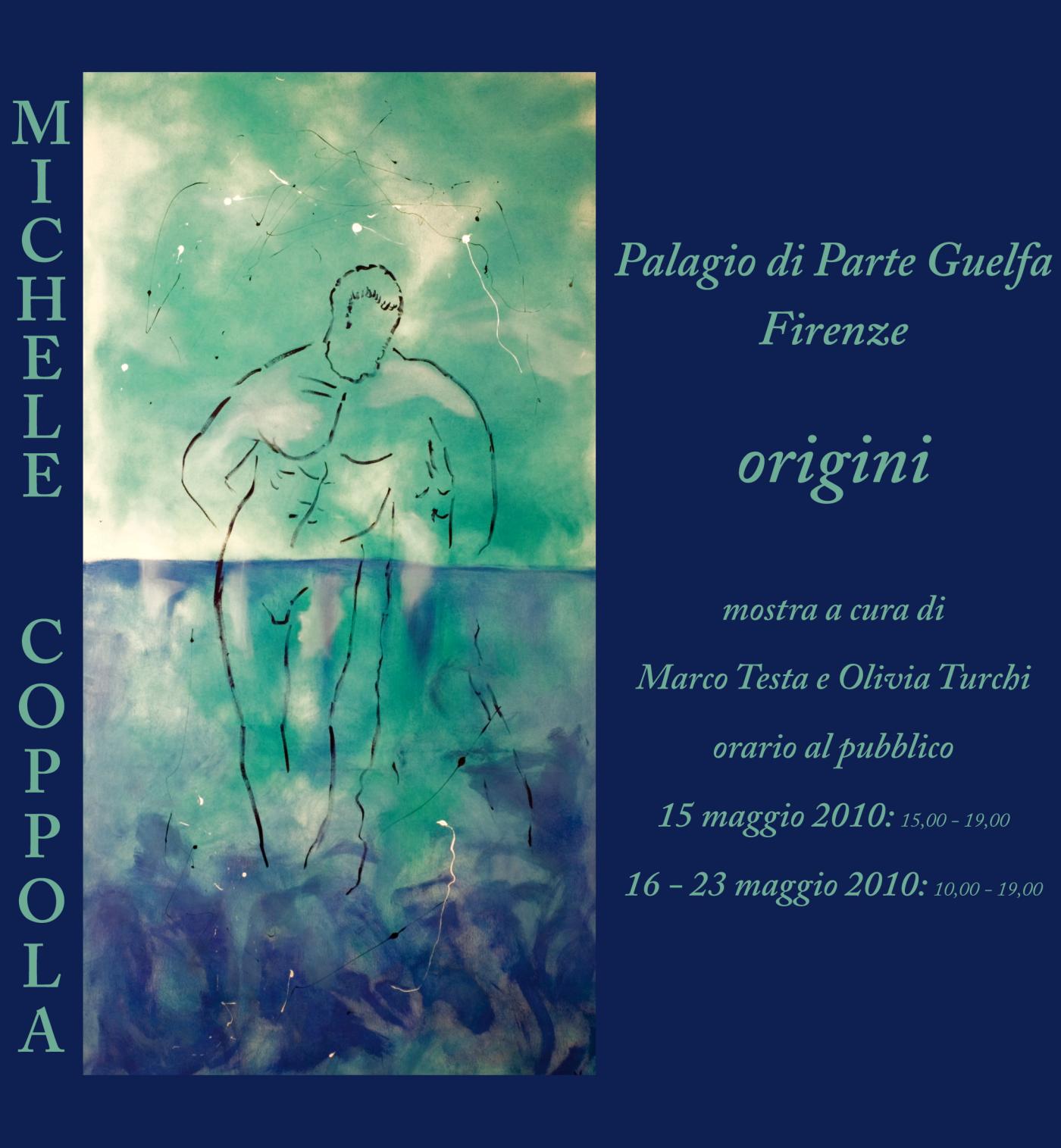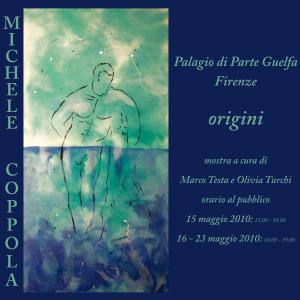Knowing who we are and what history belongs to us makes us free men projected into the future. The works of Michael Coppola are an authentic expression of the cognitive path of those who live the contemporary world while remaining conscious of their origins, so that archetypes become a value for the modern man. Michael Coppola’s free handling of pictorial language and colours is steeped in classical and modern myths. From abstract backgrounds that contain fading figurative and conceptual elements, almost à la Rothko, there emerge with quick brushstrokes the myths of ancient culture: the Nike of Samothrace, the Farnese Hercules, the Poseidon of Cape Artemisio, the group of Laocoon and many other masterpieces of classical art. Drawn by fast and energetic lines, they emanate an iconographic power that is at the same time a charismatic power that can transcend time. Their shapes, tangible reminder of our origins, lose the rhetorical weight of history, capturing the lightness of memory. They are filled by the background colour and interact therewith as transparencies, while from the bright colours of contemporary myths there emerge our ancient roots. Mute presences of the past enter into dialogue with the dripping gestures which, while losing the value of Surrealist automatic writing peculiar to American Action Painting, assume the liberating state of harmonic gestures. The contamination of centuries, in Coppola’s works, takes on Pop connotations in the reiteration of the represented subject. Classical myths, possible obsessions of the present, become icons linked to the collective memory of a society full of fasti triumphales. The challenge of the past is sublimated in a stratified temporal quotation: Rothko, Pollock, Pop Art interact with Nikai, Laocoons, Hercules, ephebes, tyrannicides, and seamlessly amalgamate into a single whole. Michael Coppola embarks upon his expressive research towards a new art with a very personal artistic language: the myths become introspective icons and symbols, capable to explain the origins of a present charged with density and contradictions..
Marco Testa
Sudden Art Conceived as a museum or an inaccessible secret hideaway of almost monastic simplicity or inhabited by dummies and masks, the artist’s studio is a place of creation and discovery. Immersing yourself in this space, be it an intimate secret studio, a cosy middle-class dwelling, a loft or a bare warehouse, means coming into contact with this eloquent place for making Art. A private, often inaccessible space, rather than being marginal, a studio is essential for providing a complete understanding and interpretation of the artist. Access to these places gives one a privileged perception of the artist’s world, work and research: here his work is still immersed in its original habitat. The studio setting thus becomes an integral part of the artwork and therefore reveals not only the secrets of the creative process but also the poetic and existential universe of he who lives in and love these places. One cold winter’s morning I had the opportunity of meeting Michele Coppola in his “workshop” where mind and matter merge into a work of art, a space that welcomed him and his creative fever for a short but intense season. The austerity of the place certainly did not convey the explosion of light and colour that was to greet me when I crossed the threshold of that sterile building, a grey concrete “box” enveloped in a gloomy atmosphere. The almost surreal bright light that filters through the great windows almost blinds you, the acrid smell of turpentine overwhelms you, immerging you for an instant in a bath of intoxicating colour. Then suddenly Art appears: the Tyrannicides, Hercules, Nikai and the Minotaurs come towards you in all their splendour, enveloped in thunderous, impetuous, bright, almost irreverent colours. The strength, the emphasis on colour and the modernity that pervade Michele’s painting are also transmitted to the space, the overlapping and contaminations between classical and contemporary painting penetrate the environment transporting you into a dimension of real life history. Here the tools of the trade, clothes, music, objects trace back to the inhabitant, a visual diary of the artist’s microcosm. Just as in his paintings Coppola projects our history and origins into the contemporary world, while representing the mythological element in his interpretation of colours, so in these austere and severe surroundings the painter’s presence with his colours, brushes, smells, memories and dozens and dozens of canvases stacked against the walls, crammed on shelves or with the honour of a place on an easel, brings amazing new life to this space, while cohabiting with old memories and new values. And in real life this relationship, this duality continues, the overlapping of past and present, his being a painter and a soldier penetrate and nurture each other. This self-taught painter’s artistic sensitivity which so strongly emerged in 2007 cannot be excluded from the force that derived from his military role. Energy and power, love and care for Art are characteristics which inextricably bind both man and artist, completely permeating Michele’s works, underlining the originality of his personality. Crossing the threshold of creative space to discover where Art originates, sheds light on the artist’s identity, resulting in a kind of self-portrait, the most sincere, most introspective and perhaps the most indiscreet, revealing the contamination and overlapping between what is and what was and constitutes the wealth of Coppola’s personality and work. Testimony of a man free of contemporaneity who looks to the past, to classical history and traditions, who does not repudiate his being and his origins, but instead transforms them into lifeblood, bringing them to life with his interpretation in the search for new values and languages.
Olivia Turchi








Comments 0
Say something